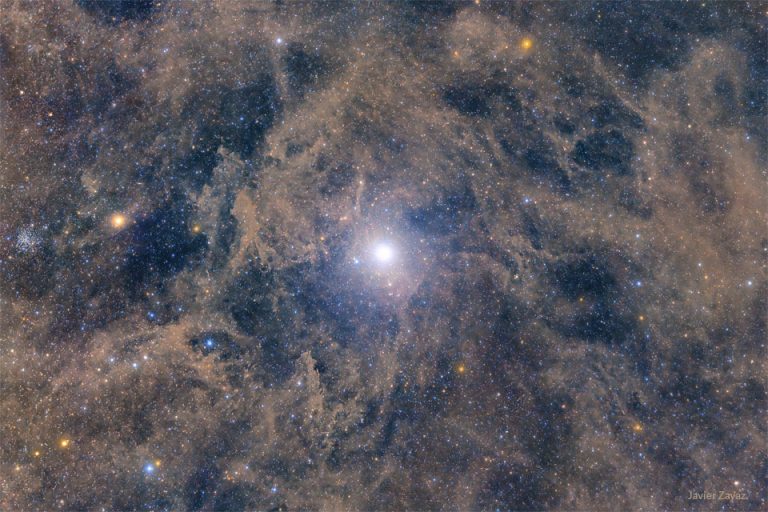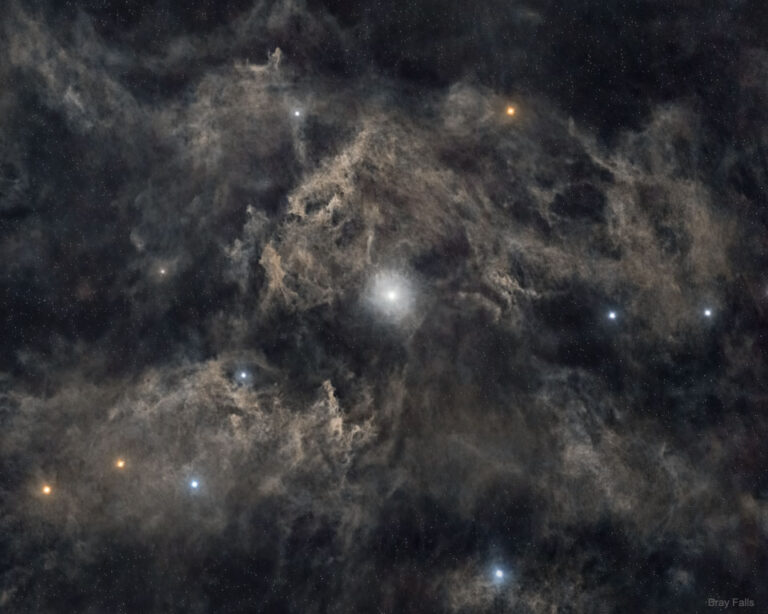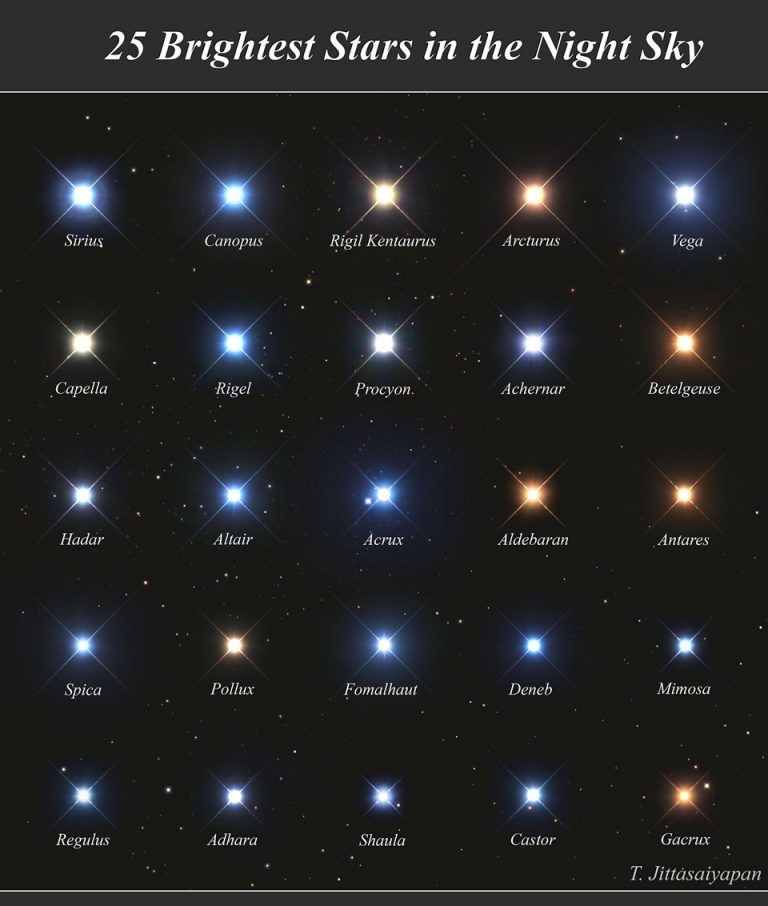指北星: 北极星及其周围的尘埃
A bright star is pictured in the center of field filled with glowing gas and dust and other, more faint, stars. Please see the explanation for more detailed information.
图像中央是一颗明亮的恒星,周围充满发光的气体和尘埃,以及其他较暗的恒星。有关更多详细信息,请参阅说明。

A bright star is pictured in the center of field filled with glowing gas and dust and other, more faint, stars. Please see the explanation for more detailed information.
图像中央是一颗明亮的恒星,周围充满发光的气体和尘埃,以及其他较暗的恒星。有关更多详细信息,请参阅说明。

请参阅说明。单击图片将下载可用的最高分辨率版本。

2023年4月11日 North Star: Polaris and Surrounding Dust Image Credit & Copyright: Javier Zayaz Explanation: Why is Polaris called the North Star? First, Polaris is the nearest bright star toward the north spin axis of the Earth. Therefore, as the Earth turns, stars appear to revolve around Polaris, but Polaris itself always stays in the same northerly direction — making it the North Star. Since no bright star is near the south spin axis of the Earth, there is currently no bright South Star. Thousands of years ago, Earth’s spin axis pointed in a slightly different direction so that Vega was the North Star. Although Polaris is not the brightest star on the sky, it is easily located because it is nearly aligned with two stars…

2023年2月3日 Polaris and the Trail of Comet ZTF Image Credit & Copyright: David Ibarra Gomez Explanation: Stars trace concentric arcs around the North Celestial Pole in this three hour long night sky composite, recorded with a digital camera fixed to a tripod on January 31, near Àger, Lleida, Spain. On that date Comet C/2022 E3 (ZTF) was near its northernmost declination in planet Earth’s sky. That put the comet about 10 degrees from Earth’s North Celestial Pole making the comet’s position circumpolar, always above the horizon, from all locations on planet Earth at more than 10 degrees northern latitude. In the startrail image, the extension of Earth’s axis of rotation into space is at the left. North star Polaris traces the short, bright, concentric arc…

2022年7月28日 North Celestial Tree Image Credit & Copyright: Jeff Dai (TWAN) Explanation: An ancient tree seems to reach out and touch Earth’s North Celestial Pole in this well-planned night skyscape. Consecutive exposures for the timelapse composition were recorded with a camera fixed to a tripod in the Yiwu Desert Poplar Forests in northwest Xinjiang, China. The graceful star trail arcs reflect Earth’s daily rotation around its axis. By extension, the axis of rotation leads to the center of the concentric arcs in the night sky. Known as the North Star, bright star Polaris is a friend to northern hemisphere night sky photographers and celestial navigators alike. That’s because Polaris lies very close to the North Celestial Pole on the sky. Of course it can be…

2021年04月28日 North Star: Polaris and Surrounding Dust Image Credit & Copyright: Bray Falls Explanation: Why is Polaris called the North Star? First, Polaris is the nearest bright star toward the north spin axis of the Earth. Therefore, as the Earth turns, stars appear to revolve around Polaris, but Polaris itself always stays in the same northerly direction — making it the North Star. Since no bright star is near the south spin axis of the Earth, there is currently no South Star. Thousands of years ago, Earth’s spin axis pointed in a slightly different direction so that Vega was the North Star. Although Polaris is not the brightest star on the sky, it is easily located because it is nearly aligned with two stars in…

2019 June 25 夜空中最亮的25颗星 影像来源及版权:Tragoolchitr Jittasaiyapan 说明:你知道一些最亮星的名称吗?你很可能知道,即使一些亮星的名称如此古老,它们可以追溯到有文字记载的初期。许多世界文化对最亮星都赋予了他们自己的名称,记住它们在文化和历史上都是非常重要的。然而,为了清楚的进行国际交流,国际天文学联合会(IAU)已经开始指定标准的恒星名称。以上这幅真彩色特征影像呈现了目前人类所看到夜空中最亮的25颗星,加上它们被IAU确认的名字。一些恒星的名称具有有趣的含义,包括天狼星(拉丁语是“炎热天气”)、织女星(阿拉伯语是“坠落”)和心宿二(希腊语是“与火星竞争”)。你可能也不太熟悉其他的亮星名称,即使熟悉的北极星因为太过黯淡而不能列入这份名单中。 25 Brightest Stars in the Night Sky Image Credit & Copyright: Tragoolchitr Jittasaiyapan Explanation: Do you know the names of some of the brightest stars? It’s likely that you do, even though some bright stars have names so old they date back to near the beginning of written language. Many world cultures have their own names for the brightest stars, and it is culturally and historically important to remember them. In the interest of clear global communication, however, the International Astronomical Union (IAU) has begun to designate standardized star names. Featured above in true color are the 25 brightest stars in the night sky, currently as seen by humans, coupled with their IAU-recognized names. Some star names have…